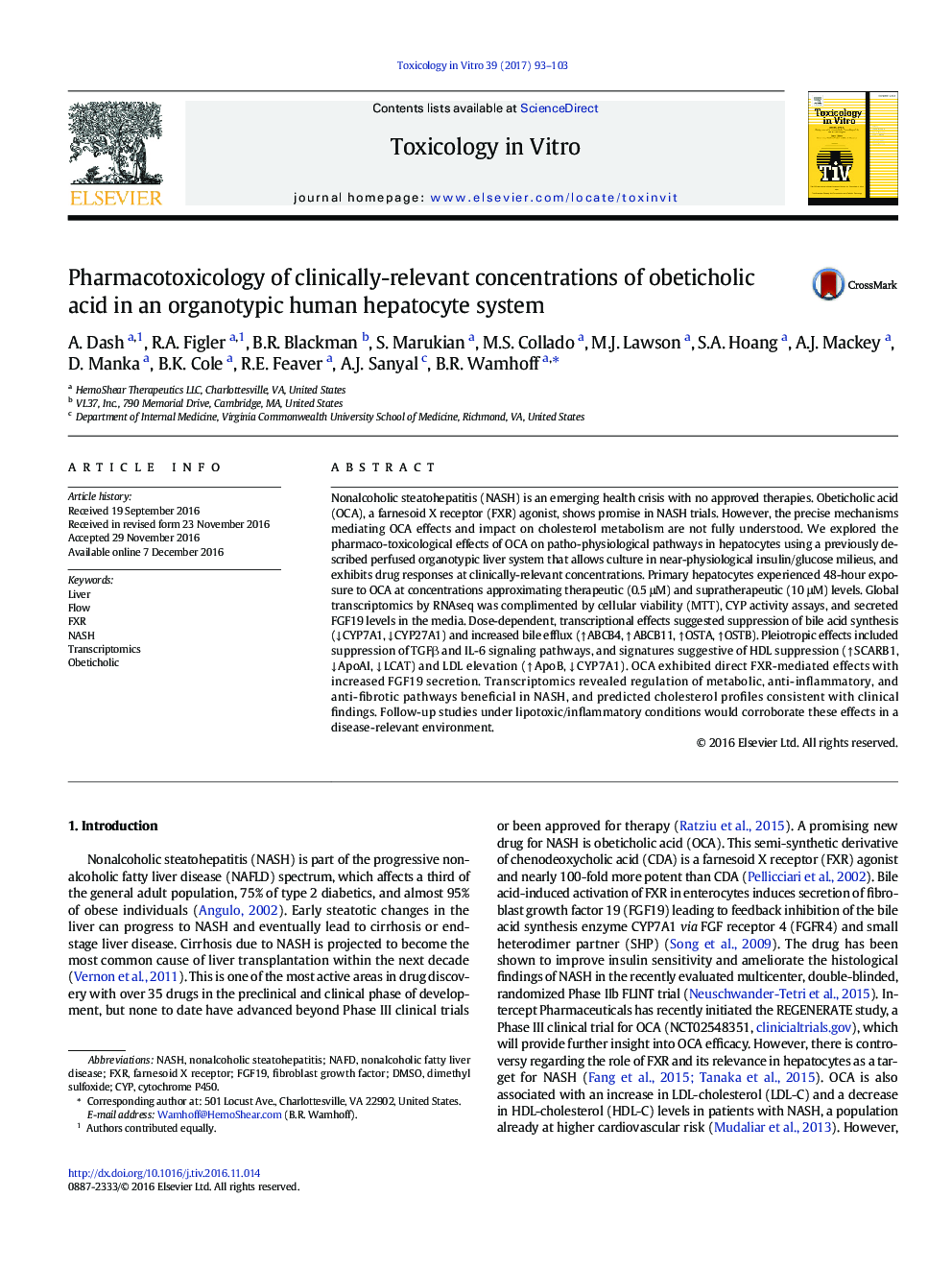| کد مقاله | کد نشریه | سال انتشار | مقاله انگلیسی | نسخه تمام متن |
|---|---|---|---|---|
| 5562740 | 1562706 | 2017 | 11 صفحه PDF | دانلود رایگان |
- Clinical concentrations of obeticholic acid were tested in an organotypic liver model.
- Transcriptomics reveal metabolic pathway effects beneficial in fatty liver disease.
- Changes predictive of lipoprotein abnormalities were also noted.
- Cytochrome P450 effects raise concern for potential drug-drug interactions.
Nonalcoholic steatohepatitis (NASH) is an emerging health crisis with no approved therapies. Obeticholic acid (OCA), a farnesoid X receptor (FXR) agonist, shows promise in NASH trials. However, the precise mechanisms mediating OCA effects and impact on cholesterol metabolism are not fully understood. We explored the pharmaco-toxicological effects of OCA on patho-physiological pathways in hepatocytes using a previously described perfused organotypic liver system that allows culture in near-physiological insulin/glucose milieus, and exhibits drug responses at clinically-relevant concentrations. Primary hepatocytes experienced 48-hour exposure to OCA at concentrations approximating therapeutic (0.5 μM) and supratherapeutic (10 μM) levels. Global transcriptomics by RNAseq was complimented by cellular viability (MTT), CYP activity assays, and secreted FGF19 levels in the media. Dose-dependent, transcriptional effects suggested suppression of bile acid synthesis (â CYP7A1, â CYP27A1) and increased bile efflux (â ABCB4, â ABCB11, â OSTA, â OSTB). Pleiotropic effects included suppression of TGFβ and IL-6 signaling pathways, and signatures suggestive of HDL suppression (â SCARB1, â ApoAI, â LCAT) and LDL elevation (â ApoB, â CYP7A1). OCA exhibited direct FXR-mediated effects with increased FGF19 secretion. Transcriptomics revealed regulation of metabolic, anti-inflammatory, and anti-fibrotic pathways beneficial in NASH, and predicted cholesterol profiles consistent with clinical findings. Follow-up studies under lipotoxic/inflammatory conditions would corroborate these effects in a disease-relevant environment.
Journal: Toxicology in Vitro - Volume 39, March 2017, Pages 93-103
